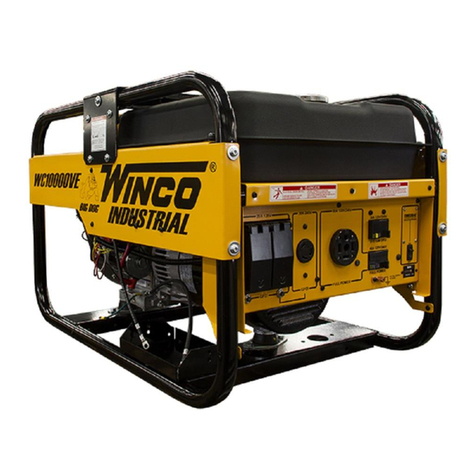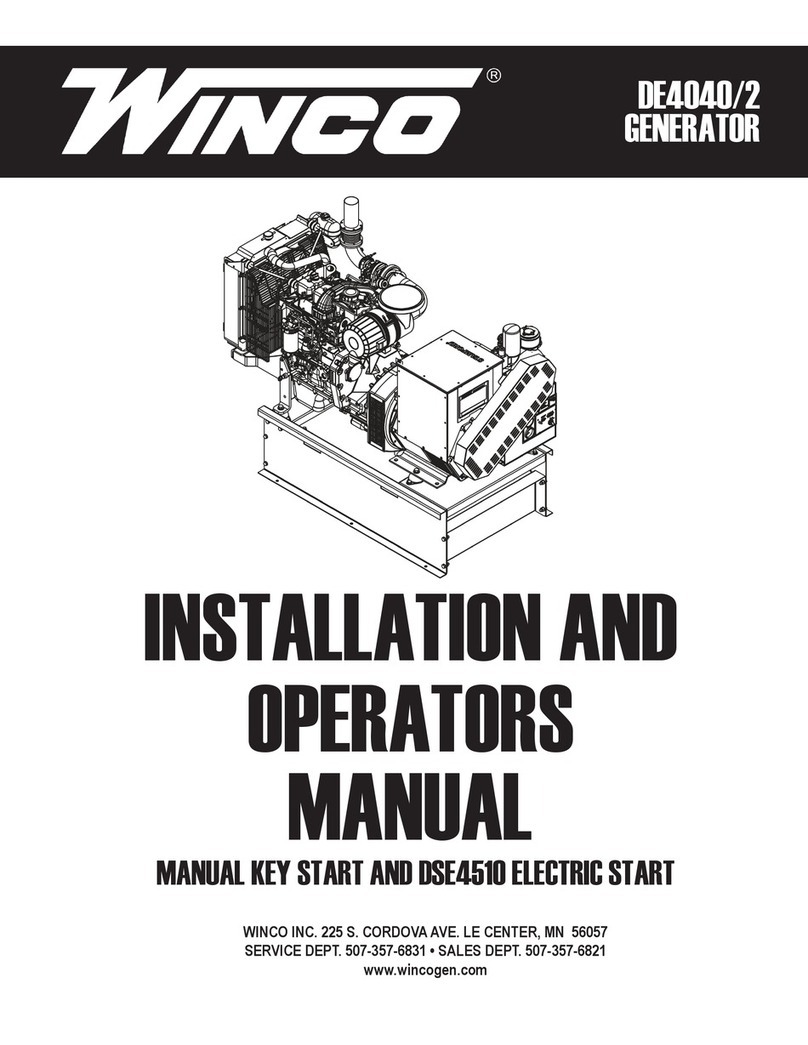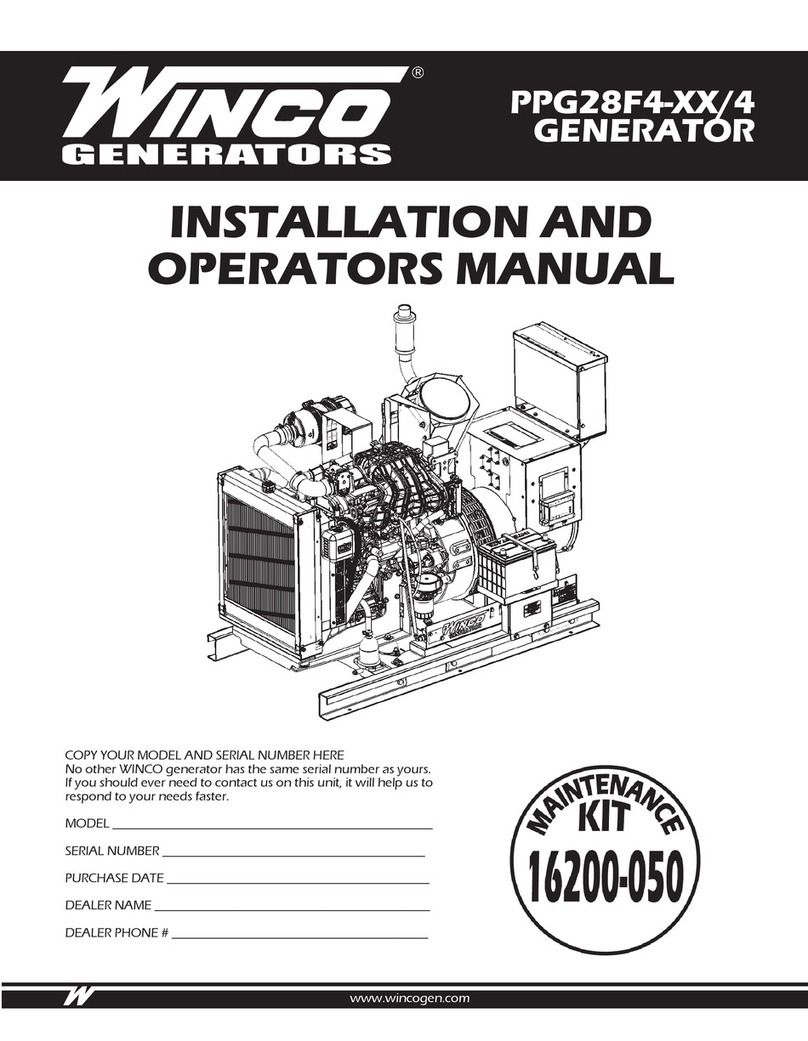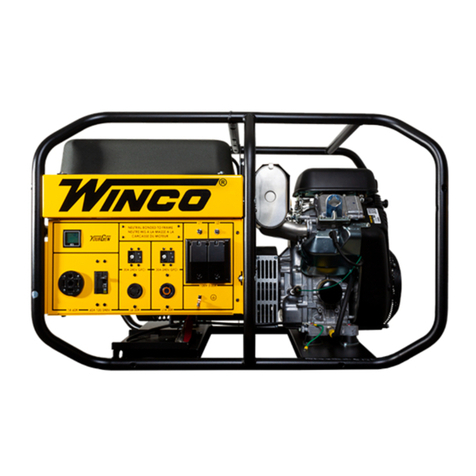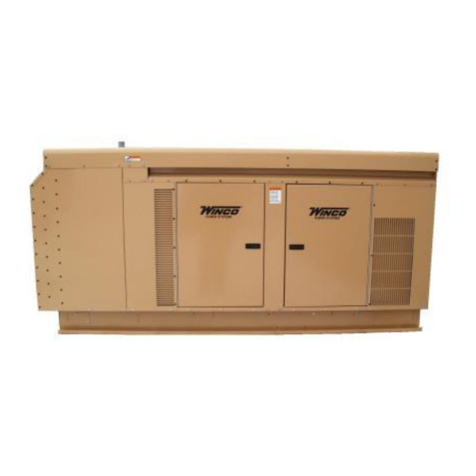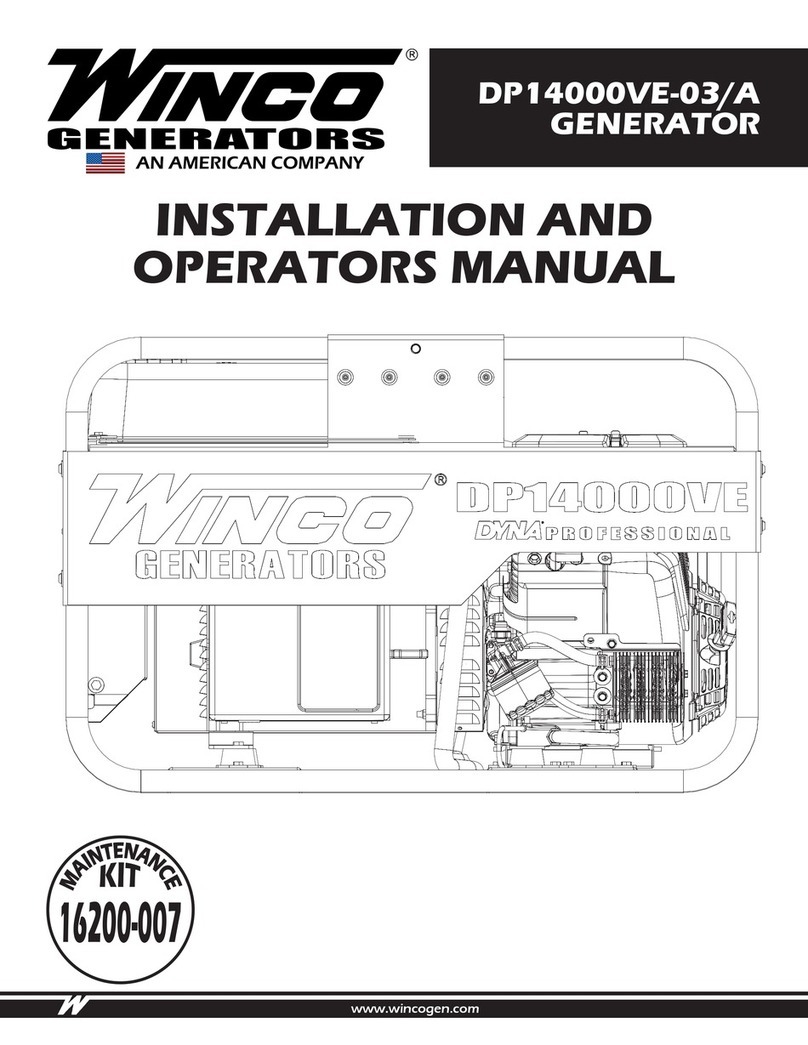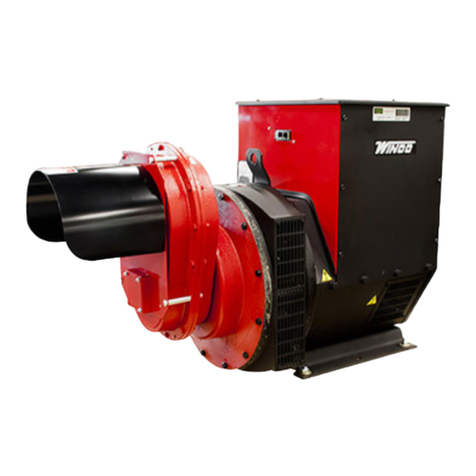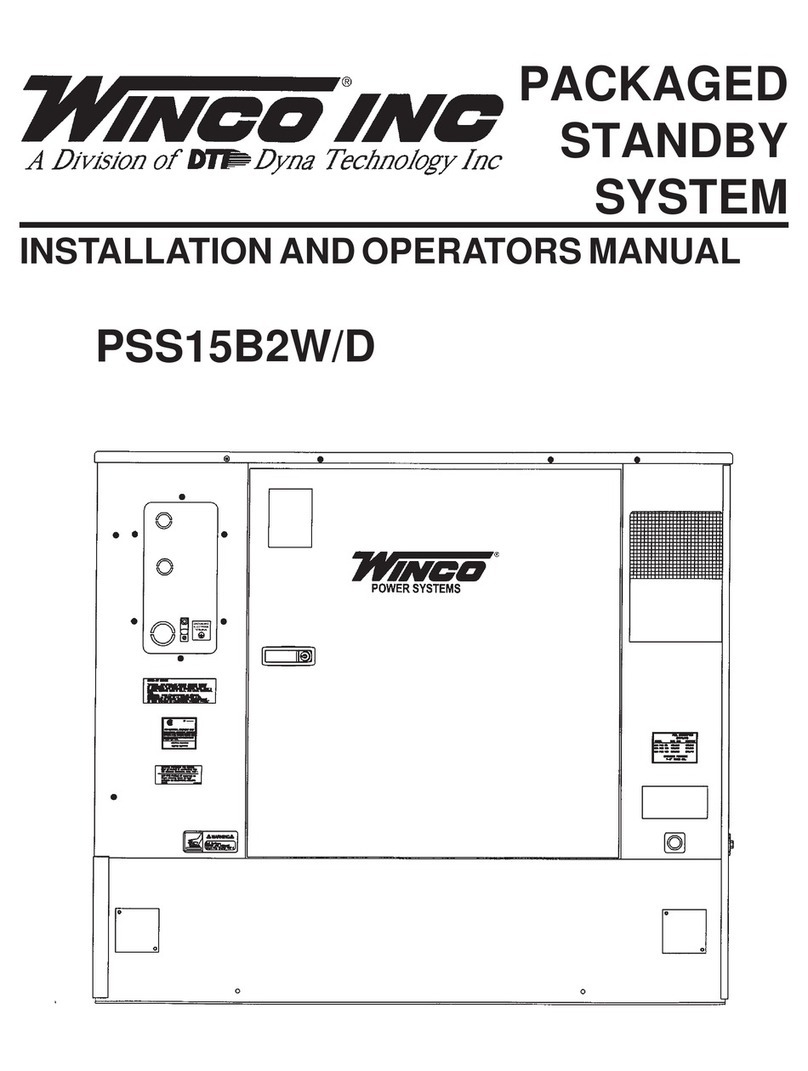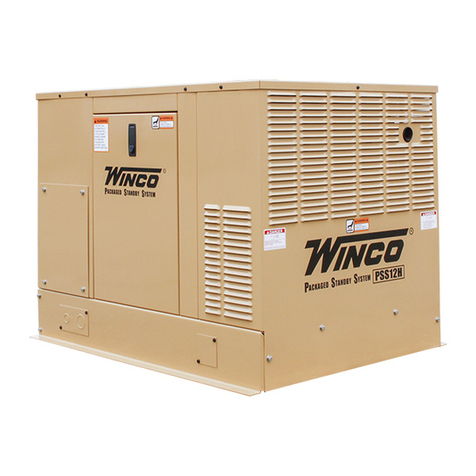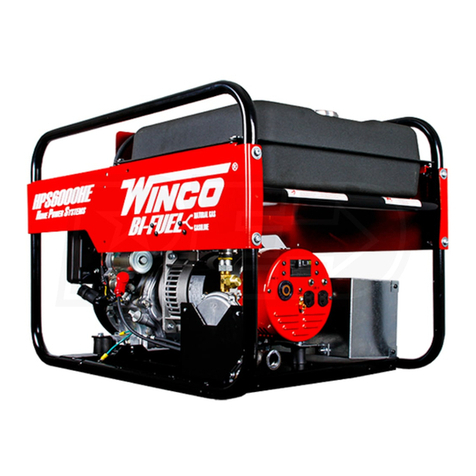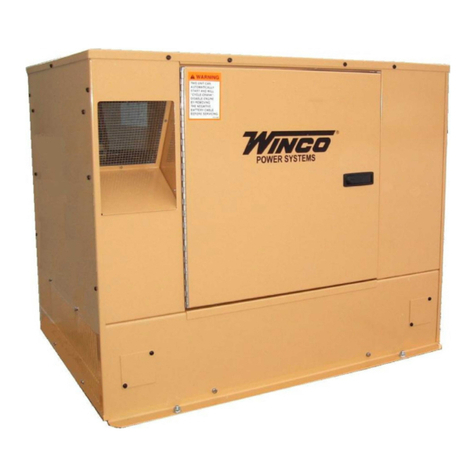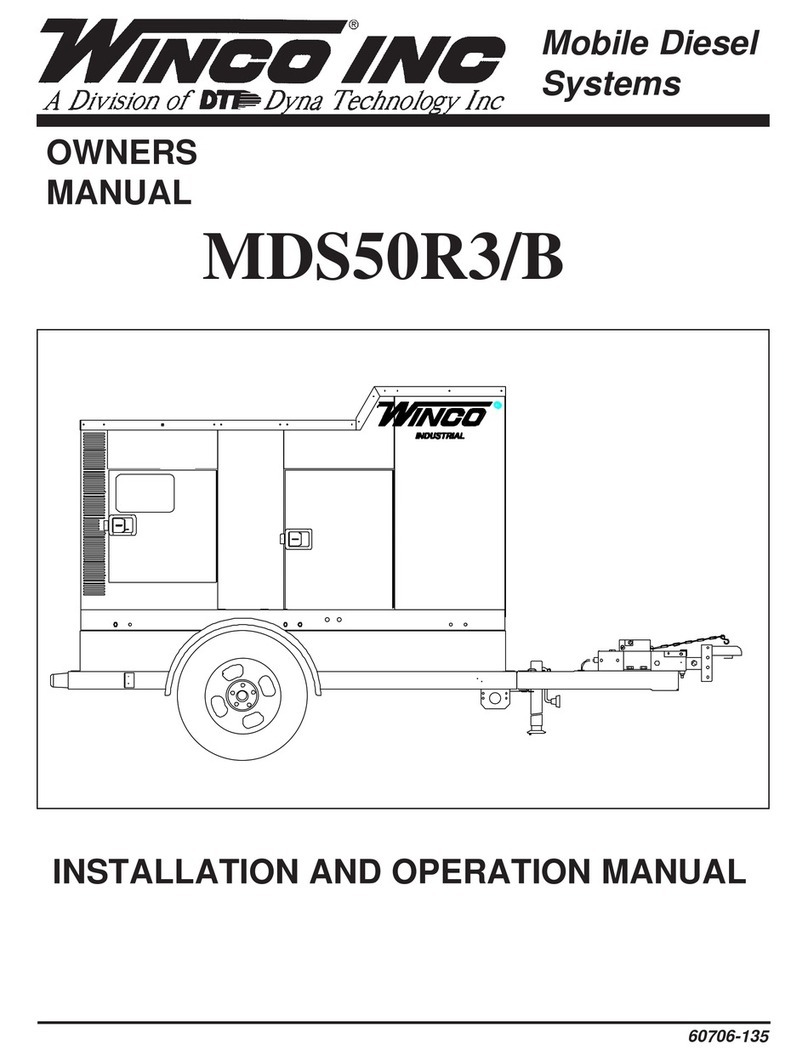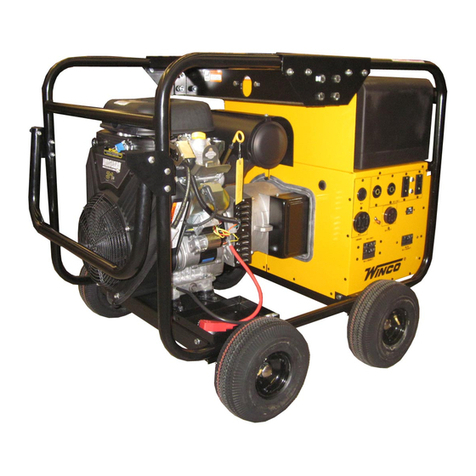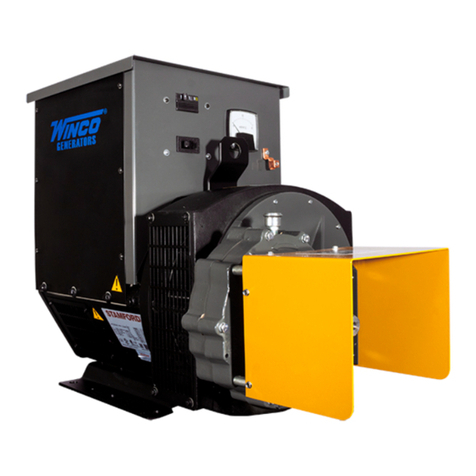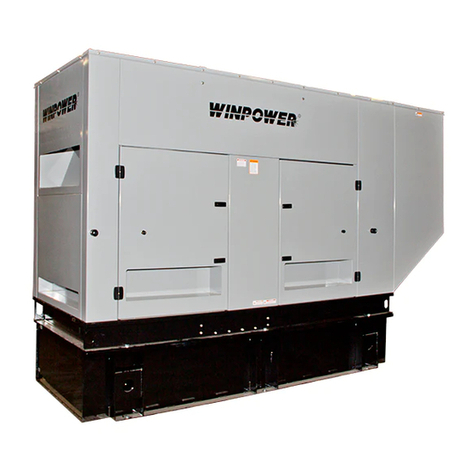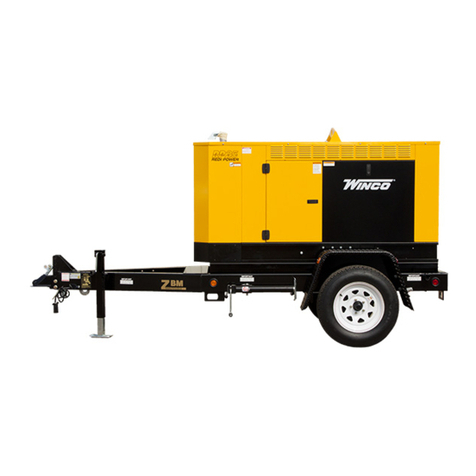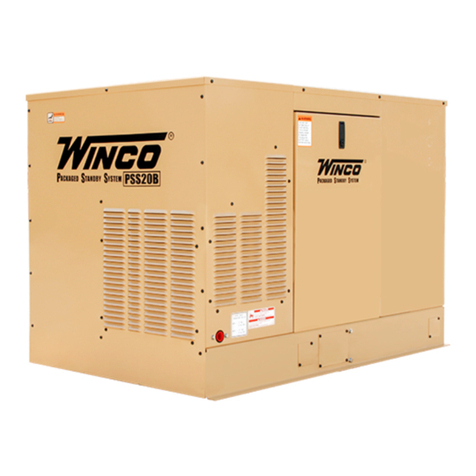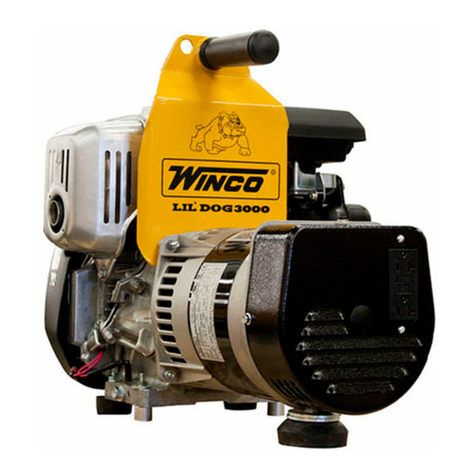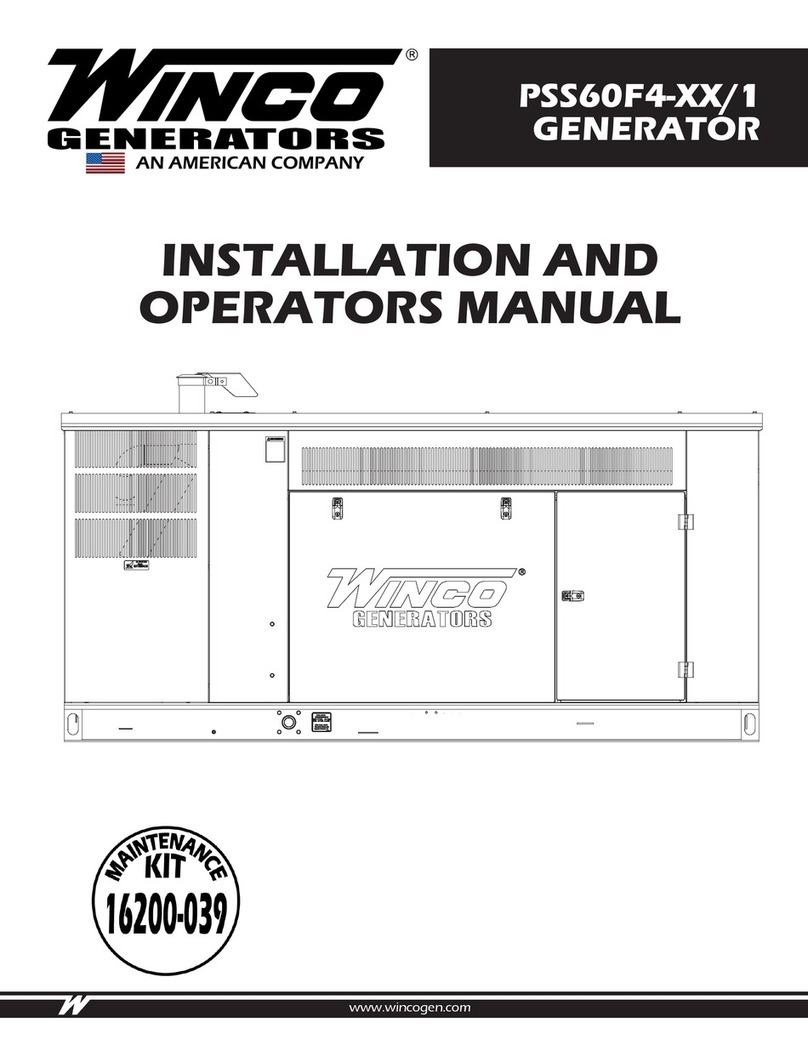
5
3240 60706-236
Self-exciting generators respond to severe overload-
ing differently than utility power. When overloaded,
the engine is not able to supply enough power to
bring the electric motor up to operating speed. The
generator responds with high initial starting current,
but the engine speed drops sharply. The overload
may stall the engine. If allowed to operate at very
low speeds, the electric motor starting winding will
burn out in a short time. The generator winding may
also be damaged.
CAUTION: EQUIPMENT DAMAGE
RUNNING THE GENERATOR SET UNDER
THESE CONDITIONS MAY RESULT IN DAMAGE
TO THE GENERATOR STATOR AS WELL AS THE
MOTOR WINDING.
The heavy surge of current required for starting
motors is required for only an instant. The genera-
tor will not be damaged if it can bring the motor up
tospeedinafewsecondsoftime.Ifdifcultyis
experienced in starting motors, turn all other electri-
cal loads off and if possible reduce the load on the
electric motor.
PREPARING THE UNIT
UNPACKING
CAUTION: EQUIPMENT DAMAGE
THIS UNIT HAS BEEN SHIPPED WITHOUT OIL.
Failure to maintain the engine oil at the proper level
will result in serious engine damage.
When you unpack your new engine-generator set be
sure to remove all the information sheets and manu-
als from the carton.
1. This generator-set was in good order when
shipped. Inspect the generator-set promptly after
receiving it. If any damage is noted, notify the trans-
portation company immediately; request proper pro-
ceduresforlinga“concealeddamage”claim.Title
totheequipmentandresponsibilityforlingaclaim
rests with you when a generator-set is sent F.O.B.
shippingpoint.Onlyyoucanlegallyleaclaim.
2. Before proceeding with the preparations of your
new generator-set for operation, take a couple of
minutes to ensure the unit you have received is the
correctmodelandreviewthespecicationpagesin
this manual to ensure that this unit meets your job
requirements.
LUBRICATION
Beforestartingtheengine,llthecrankcasetothe
proper level with a good quality oil. The recom-
mended grade of oil and quantity of oil required is
listed in the engine operator’s manual and under
oil recommendations below. This unit was shipped
with most of the oil removed. The engine normally
holds 57 and 58 ounces of oil. Since there is some
trappedoilintheengine,whenllingthecrankcase
thersttimeusethedipsticktoensurethatyoudo
notoverllthecrankcase.Thepicturebelowshows
the full oil level mark on the dipstick.
Oilisaddedtotheenginebyremovingtheoilller
capandaddingoilatthispoint.Afterllingthe
crankcase to the proper level be sure you properly
tightentheoilllcap.NOTE:Thisenginegenerator
must be on a level surface before you check or add
oil to the system.
The necessity of using the correct oil, and keeping
the crankcase full cannot be overemphasized. En-
gine failures resulting from inadequate or improper
lubricant are considered abuse and not covered by
the generator or engine manufacturer’s warranty.
Oil Recommendations
Outdoor temperatures determine the proper oil
viscosity for the engines. Use the chart to select the
best viscosity for the outdoor temperature range
expected.
− − −
ENGLISH
ENGINE OIL
Recommended Oil
Oil Level Check
Oil Change
AMBIENT TEMPERATURE
OIL FILLER
CAP
UPPER LIMIT
LOWER LIMIT
OIL LEVEL DIPSTICK
UPPER
LIMIT
LOWER
LIMIT
SEALING WASHER
DRAIN BOLT
OIL FILLER CAP OIL LEVEL DIPSTICK
Synthetic 5W-30
8
Use 4-stroke motor oil that meets or exceeds the requirements for
API service category SJ or later (or equivalent). Always check the
API service label on the oil container to be sure it includes the
letters SJ or later (or equivalent).
Check the engine oil level with the engine stopped and in a level
position.
Start the engine and let it idle for 1 or 2 minutes. Stop the engine
and wait for 2 or 3 minutes.
Remove the oil level dipstick and wipe it clean.
Fully insert the oil level dipstick, then remove it to check the oil
level.
If the oil level is low, remove the oil filler cap, and fill with the
recommended oil to the upper limit mark on the oil level dipstick.
Reinstall the oil level dipstick and oil filler cap.
The Oil Alert system (applicable types) will automatically stop the
engine before the oil level falls below the safe limit. However, to
avoid the inconvenience of an unexpected shutdown, always
check the engine oil level before startup.
Oil is a major factor affecting performance and service life.
Use 4-stroke automotive detergent oil.
Drain the used oil when the engine is warm. Warm oil drains
quickly and completely.
Place a suitable container below the engine to catch the used oil,
then remove the oil filler cap, drain bolt and sealing washer.
Allow the used oil to drain completely, then reinstall the drain
bolt and new sealing washer, and tighten the drain bolt securely.
Please dispose of used motor oil in a manner that is compatible
with the environment. We suggest you take used oil in a sealed
container to your local recycling center or service station for
reclamation. Do not throw it in the trash, pour it on the ground,
or pour it down a drain.
Reinstall the oil filler cap and oil level dipstick securely.
The Oil Alert system (applicable types) will automatically stop
the engine before the oil level falls below the safe limit.
However, to avoid the inconvenience of an unexpected
shutdown, fill to the upper limit, and check the oil level regularly.
With the engine in a level position, fill with the recommended oil
to the upper limit mark on the oil level dipstick.
Running the engine with a low oil level can cause engine damage.
This type of damage is not covered by the
Distributor’s Limited
Warranty.
Running the engine with a low oil level can cause engine
damage. This type of damage is not covered by the
Distributor’s
Limited Warranty.
SAE 10W-30 or 5W-30 is recommended for general use. Use a full
synthetic 5W-30 for starting/operating temperatures between 5°F
( 15°C) and 13°F ( 25°C). Other viscosities shown in the chart
may be used when the average temperature in your area is within
the indicated range.
1.
2.
3.
4.
5.
1.
2.
3.
4.
09/07/07 20:34:57 32Z6L600_008
− − −
ENGLISH
ENGINE OIL
Recommended Oil
Oil Level Check
Oil Change
AMBIENT TEMPERATURE
OIL FILLER
CAP
UPPER LIMIT
LOWER LIMIT
OIL LEVEL DIPSTICK
UPPER
LIMIT
LOWER
LIMIT
SEALING WASHER
DRAIN BOLT
OIL FILLER CAP OIL LEVEL DIPSTICK
Synthetic 5W-30
8
Use 4-stroke motor oil that meets or exceeds the requirements for
API service category SJ or later (or equivalent). Always check the
API service label on the oil container to be sure it includes the
letters SJ or later (or equivalent).
Check the engine oil level with the engine stopped and in a level
position.
Start the engine and let it idle for 1 or 2 minutes. Stop the engine
and wait for 2 or 3 minutes.
Remove the oil level dipstick and wipe it clean.
Fully insert the oil level dipstick, then remove it to check the oil
level.
If the oil level is low, remove the oil filler cap, and fill with the
recommended oil to the upper limit mark on the oil level dipstick.
Reinstall the oil level dipstick and oil filler cap.
The Oil Alert system (applicable types) will automatically stop the
engine before the oil level falls below the safe limit. However, to
avoid the inconvenience of an unexpected shutdown, always
check the engine oil level before startup.
Oil is a major factor affecting performance and service life.
Use 4-stroke automotive detergent oil.
Drain the used oil when the engine is warm. Warm oil drains
quickly and completely.
Place a suitable container below the engine to catch the used oil,
then remove the oil filler cap, drain bolt and sealing washer.
Allow the used oil to drain completely, then reinstall the drain
bolt and new sealing washer, and tighten the drain bolt securely.
Please dispose of used motor oil in a manner that is compatible
with the environment. We suggest you take used oil in a sealed
container to your local recycling center or service station for
reclamation. Do not throw it in the trash, pour it on the ground,
or pour it down a drain.
Reinstall the oil filler cap and oil level dipstick securely.
The Oil Alert system (applicable types) will automatically stop
the engine before the oil level falls below the safe limit.
However, to avoid the inconvenience of an unexpected
shutdown, fill to the upper limit, and check the oil level regularly.
With the engine in a level position, fill with the recommended oil
to the upper limit mark on the oil level dipstick.
Running the engine with a low oil level can cause engine damage.
This type of damage is not covered by the
Distributor’s Limited
Warranty.
Running the engine with a low oil level can cause engine
damage. This type of damage is not covered by the
Distributor’s
Limited Warranty.
SAE 10W-30 or 5W-30 is recommended for general use. Use a full
synthetic 5W-30 for starting/operating temperatures between 5°F
( 15°C) and 13°F ( 25°C). Other viscosities shown in the chart
may be used when the average temperature in your area is within
the indicated range.
1.
2.
3.
4.
5.
1.
2.
3.
4.
09/07/07 20:34:57 32Z6L600_008
